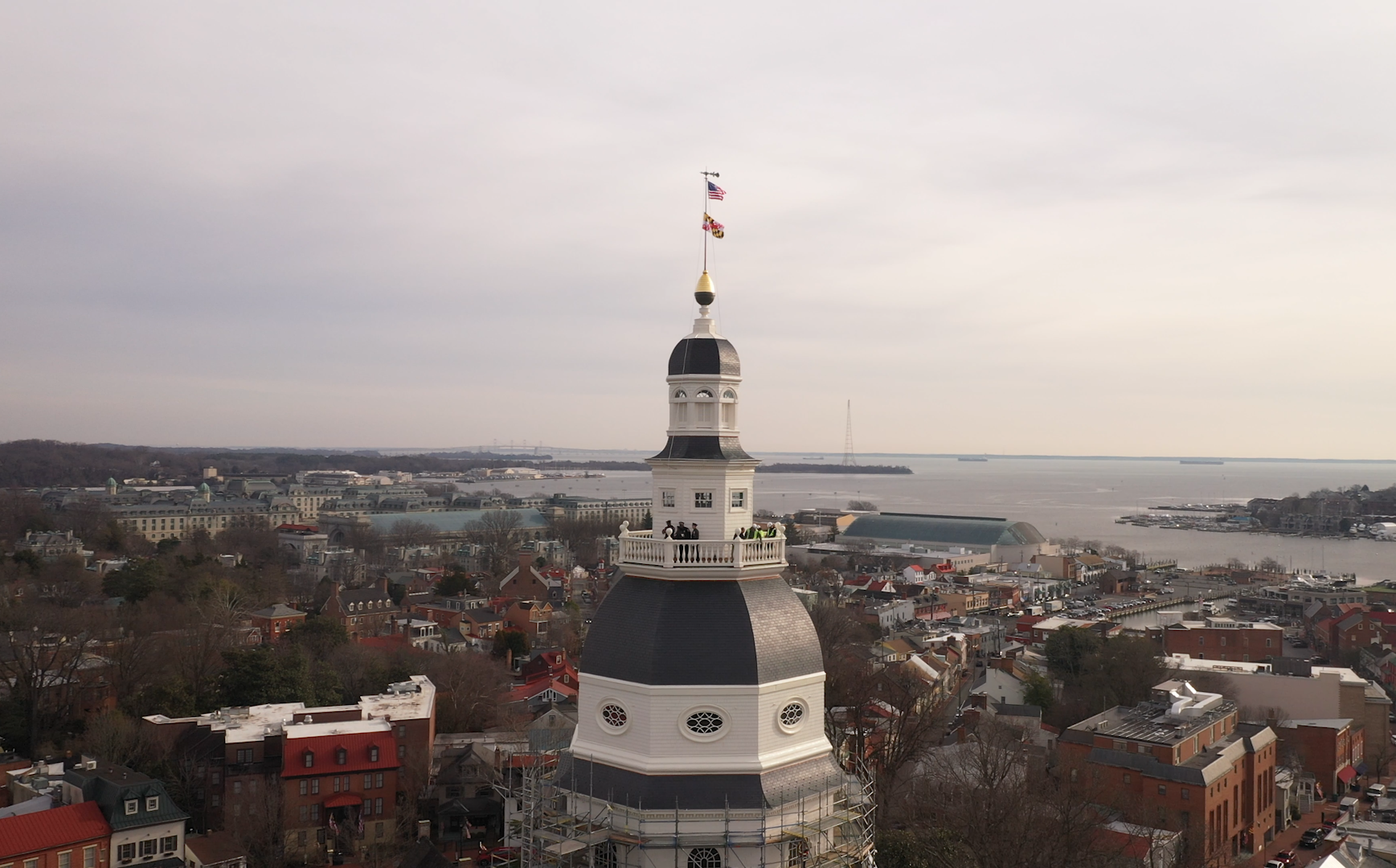A season of change: 445th General Assembly set to begin work at noon

It’s impossible to miss the signs of change in Annapolis lately. Moving boxes — incoming and outgoing — intermittently line halls and walkways. Furniture’s being shuffled around. Floors are being waxed. And coffee pots that have seen better days are set out in hallways to be hauled away.
As outgoing lawmakers host portrait unveilings and reflect on their tenures in elective office, a new crop of officials are finding their way through the corridors of power.
The 188 members of the 445th General Assembly, including 47 freshmen senators and delegates, will be sworn in at noon.
By the end of next week, Maryland will have a new set of barrier-breaking leaders in control of the upper echelons of state political power: Wes Moore as the state’s first Black governor, Aruna Miller as the first Indian-American lieutenant governor, Anthony Brown as the first Black attorney general, Brooke Lierman as the state’s first woman to serve as comptroller.
“No state in the nation has a leadership this diverse, and this reflective of the population it represents. No state is doing what Maryland is doing,” House Speaker Adrienne A. Jones (D-Baltimore County), the first Black lawmaker and first woman to serve in her role, said Tuesday at a Maryland Democratic Party luncheon.
Jones and Senate President Bill Ferguson (D-Baltimore City) will preside for the first time over the first year of a four-year term.
For Annapolis veterans, the 2023 session will feel closer to “normal” for the first time in three years. The chambers and their respective committees will meet in person and gather at receptions (the last of the pre-session fundraisers will wrap up Wednesday morning before a 90-day prohibition on campaign donations begins).
Even some of the issues will be the same. Lawmakers will continue work this year on establishing a legalized recreational cannabis industry, implementing a paid family and medical leave insurance program and responding to U.S. Supreme Court decisions on abortion rights and gun control.
Other issues lawmakers are likely to address include renter’s protections, election reform, mental health care access and whether to lift the state’s time limit for filing civil claims relating to child sexual abuse, among myriad others. Moore and his legislative team — which added five new members just this week — will soon reveal their policy priorities.
More than 250 bills were pre-filed by lawmakers before Wednesday’s start of the 90-day session.
As committees adjust to new leaders and new membership, some will also adjust to a new name — the Senate’s Committee on Education, Energy, and the Environment — or new responsibilities — the appropriations committees will, for the first time in more than a century, have expanded budgetary authority.
In 1914, the General Assembly overspent the state’s funds by about 8%, a financial disaster. The Goodnow Commission ultimately crafted a Constitutional amendment, approved by voters in 1916, that established the spending limits that will be lifted beginning this session.
Lawmakers will also be busy vetting top officials for confirmation to Moore’s new administration, though many members of the incoming governor’s cabinet have yet to be revealed. As more are named, it is likely that administration officials will be recruited from the legislative ranks, creating a domino effect of new member appointments. On Tuesday, Moore announced that he’s tapped Montgomery County Sen. Susan Lee (D) to be secretary of State, creating a second vacancy in that chamber after Sen. Paul Pinsky (D-Prince George’s) was nominated by Moore to head the Maryland Energy Administration.
Change is also apparent among the physical buildings in Annapolis. A yawning hole and construction site takes the place of the aged and creaky Department of Legislative Services building, which is expected to be rebuilt by the end of 2024. Legislative employees are now stationed at work spaces scattered throughout the legislative complex.
On Tuesday the scaffolding that obscured the State House dome during a restoration project came down, revealing a freshly glowing capital dome. While the facelift for the iconic symbol of state government is complete, Phase 2 of the $34 million State House restoration project — which includes repairs to the building’s exterior and grounds — is set to begin.
As he prepared to say farewell to the house and office he’s called home for the last eight years, Gov. Larry Hogan (R) reflected Tuesday on the history and beauty of Maryland’s State House, the oldest U.S. state capitol in continuous legislative use.
“It’s more spectacular and more beautiful than ever before,” the governor said.




 Creative Commons Attribution
Creative Commons Attribution